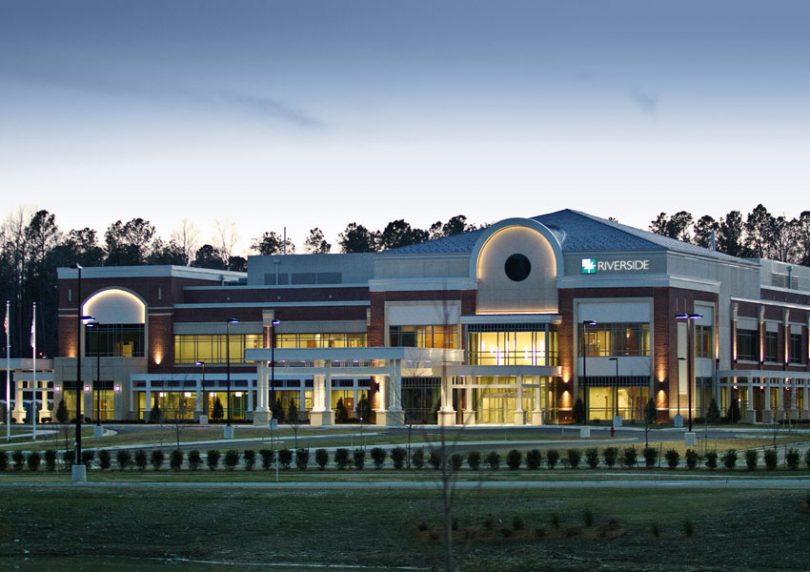Don’t let the name fool you; Riverside’s new Doctors’ Hospital is all about patients
Written by Kim O’Brien Root
—
[dropcap]More than eight years of effort comes to fruition this month when the new Riverside Doctors’ Hospital Williamsburg opens its doors.[/dropcap]Plans for the 110,000-square foot facility were first unveiled in 2005, followed by about five years to get the necessary approval. The $72 million project broke ground in July 2011.
The final structural beam was put into place on Jan. 27, 2012, on a hospital that officials say was designed with the latest in technology and state-of-the-art care for patients. The hospital will open for business after 22 months of construction.
Although the official name of the new facility is Doctors’ Hospital, Riverside stresses that it’s really the community’s. It creates a second major medical facility in the Williamsburg area, the other being Sentara Williamsburg Regional Medical Center off Mooretown Road.
Doctors’ Hospital—located on more than 25 acres at the intersection of Route 199 and Route 60 in James City County’s Quarterpath development—is intended to serve the southern end of Williamsburg. During Riverside’s battle to build the hospital, thousands of letters of support from the community poured in.
“What we heard from the community over this whole process, what we’ve heard over and over, is their desire for convenience and choice,” said Steve McCary, administrator for Riverside Doctors’ Hospital.
During a two-week period in April, more than 2,200 community members, doctors and staff got a sneak peak at the new hospital. About 700 people came to an open house on April 14.
“Everyone who has come through the building has commented on the beauty of the site, the technology in the building, and the pride and energy of the staff and volunteers who have chosen to work here,” McCary said.
“We could not have advanced this far, nor feel as confident of the future without leadership from our volunteer board of directors and support from the medical community,” he added.
The hospital includes 40 private rooms—33 for medical/surgical patients and seven intensive care rooms. There’s a full-service emergency department with 12 private patient rooms and a “fast-track” area, two operating rooms, a procedure room, and radiology, cardio/pulmonary, and diagnostic services.
The two-story building includes a lobby, café, community education center, pharmacy, a meditation and reflection area, and the Lifelong Health Center, which is intended to aid in the transition of patients to services outside the hospital.
The latest in hospital technology was used throughout the hospital, from beds that can hold patients up to 7-foot-2-inches tall and 500 lbs. to computerized display screens outside rooms that note the names of the patient, the physician and the nurse on duty. Countless measures are in place to help the nurses, who will all carry phones that allow them to be easily reached.
Everything was designed to keep safety in mind, McCary said, including infection-control and fall-protection measures.
Doctors’ Hospital will employ a staff of 250 in full-and part-time positions, along with a dedicated volunteer corps. McCary described the staff as a “great team” that’s quickly coming together.
“Our difference is not going to be the technology,” he said. “It’s going to be the people. Technology is going to help them, but the big difference is going to be the people.”







